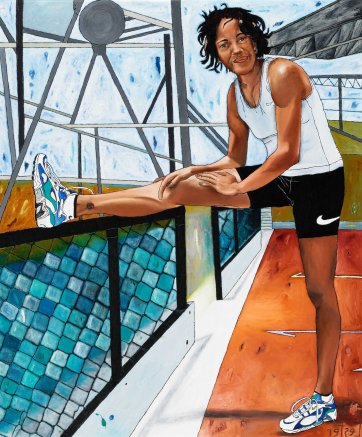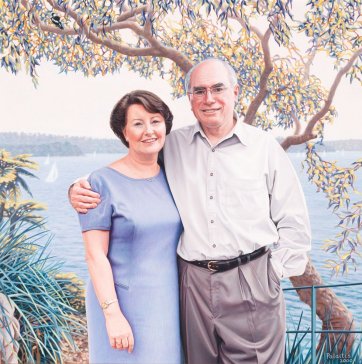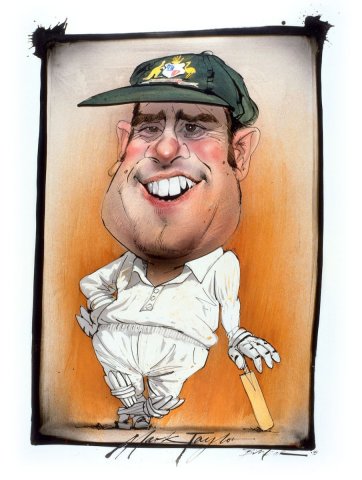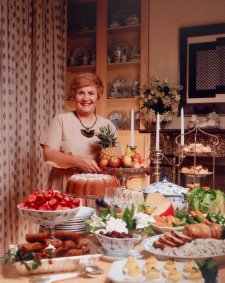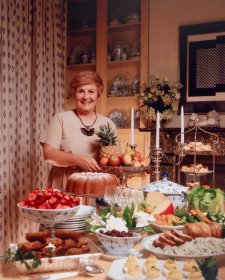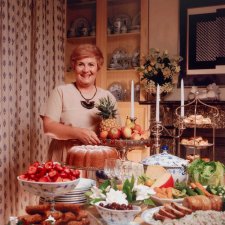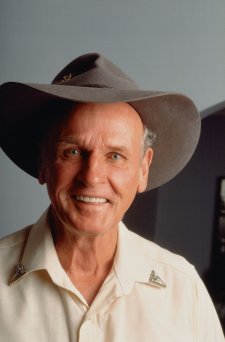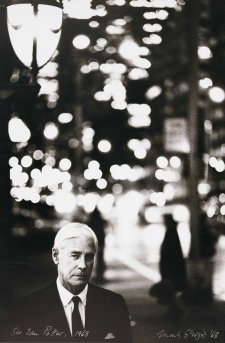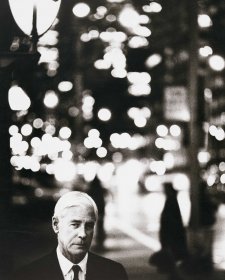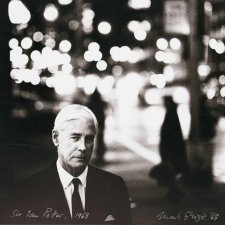At the first meeting of the National Portrait Gallery's Board in 1998 it was determined to develop a collection of Australian portraits. Commissioned portraits were regarded as an essential component of a nationally significant and contemporary collection.
From the outset it was recognised that the National Portrait Gallery's commissioning of portraits would be an unusual and distinctive practice for a public gallery. Public art galleries generally build collections of contemporary art by acquiring from the pool of works that already exist, that are shown in dealer galleries, or that are found in artists' studios. Galleries do not seek to shape contemporary art, but rather to reflect its shape in their collecting.
There are good reasons why a National Portrait Gallery should behave differently from other types of gallery and to actively commission portraits. Firstly, the pool of existing portraits in the community has formed in an accidental, haphazard way. There are many people worthy of inclusion in the Gallery who have, for one reason or another, never been the subject of a portrait. On the other hand, there are many individuals who have been the subject of a portrait but the standard of the depiction falls below the high aesthetic standard of the Gallery's collection. For a National Portrait Gallery the importance of the subject and the quality of the portrait must both be taken into account. In order to ensure both criteria are met, commissioning a portrait is the best way to achieve the ideal marriage of interesting subject and fine artist.
In establishing a program of commissioning portraits, the National Portrait Gallery was able to benefit from the accumulated experience of its counterpart, the National Portrait Gallery in London . Although the London institution has a much longer history, dating back to 1856, for much of its history its policies precluded commissioning portraits and it has really only been since the 1970s that commissioning has been a central part of the collecting strategy.
In November 2000, Honor Clerk, the then curator of the 20 th Century collection of the National Portrait Gallery in London , addressed a Canberra audience on the subject Making portraits, Making waves; the hazardous business of commissioning portraits .
Of the National Portrait Gallery in London she said;
In all, during the last 20 years the Gallery has commissioned over 100 portraits. There has been a deliberate policy of encompassing as wide a range of media as possible, and of approaching artists not normally associated with portraiture to produce a lively, diverse display, giving visitors a sense of the breadth of possibility in what might otherwise be perceived as a very narrow field. This aim always feels amply justified by the huge number of visitors who linger over the contemporary works on view ignoring the historical collection entirely.
The London gallery's aspirations are in accord with those of the National Portrait Gallery in Australia . A diversity of mediums and the commissioning of portraits from fine artists not normally associated with portraiture have been important parts of our gallery's commissioning policy from the outset.
When we use the word 'policy' in respect to commissions, there are some points of explanation required. The Gallery's guidelines for collection development sets out the broad mechanism by which portraits are commissioned and the process of approval and acceptance of the finished work into the collection. But the policy does not set out a formal mechanism by which the subject, or indeed the artist is selected. Many people ask if the Gallery has a list of names of potential subjects and artists. The answer is that at each Board meeting the subject of commissions is a standing item and names are put forward by the Board and discussed. Sometimes an artist is suggested, but the Board's principal role is to decide on subjects whose portraits should be commissioned; most often the selection of an appropriate artist is left to the Gallery staff.
The apparently ad hoc nature of the way in which the Gallery's commissions come into being keeps the program fresh and up-to-date. It is an important aspect of the Gallery's responsiveness to the world we live in and its openness to good ideas regardless of where they come from. But for all the lack of visible policy, there is nonetheless always a strong awareness of the balance of the collection - all fields and types of endeavour will ultimately be represented and the geographic spread of subjects is a key aspect of the Gallery's national charter. It is, furthermore always the intention to commission a specific National Portrait Gallery portrait of the prime minister (with spouse) additional to the official portrait undertaken by the Historic Memorials Committee.
This book contains the portraits commissioned for the Gallery since 1998 but does not include portraits commissioned by third parties with a specific view to donation to the collection. There have been a number of instances where this has occurred but in each case the Board has not been the instigator of the commission, but has been happy to accept the finished as a gift in the same way that any portrait offered as a gift is assessed and accepted by the Gallery.
As this book attests, all of the National Portrait Gallery's portrait commissions have been undertaken with the intention of finding the best match of subject and artist. There is a great deal of intuition in these matches - the artist does not necessarily have to know the subject, or have met the subject. Yet there must be some basis (it may be shared background, shared world-view of interests, or some stylistic trigger) on which to base the view that the result would be more interesting and more profound than the result of a casual encounter.
The fruits of the commissioning program, brought together in this book, form the nucleus of the Gallery's on-going engagement with contemporary art. The results have proven that portraiture can be an important facet of contemporary art, not a side-stream practice undertaken only by specialist portrait painters.
Andrew Sayers


